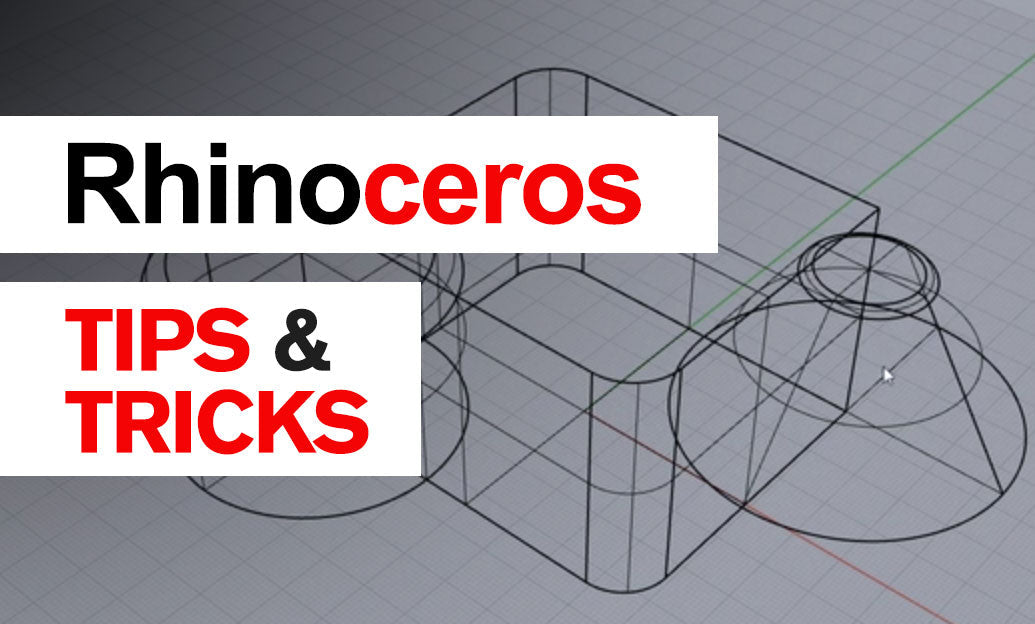Your Cart is Empty
Customer Testimonials
-
"Great customer service. The folks at Novedge were super helpful in navigating a somewhat complicated order including software upgrades and serial numbers in various stages of inactivity. They were friendly and helpful throughout the process.."
Ruben Ruckmark
"Quick & very helpful. We have been using Novedge for years and are very happy with their quick service when we need to make a purchase and excellent support resolving any issues."
Will Woodson
"Scott is the best. He reminds me about subscriptions dates, guides me in the correct direction for updates. He always responds promptly to me. He is literally the reason I continue to work with Novedge and will do so in the future."
Edward Mchugh
"Calvin Lok is “the man”. After my purchase of Sketchup 2021, he called me and provided step-by-step instructions to ease me through difficulties I was having with the setup of my new software."
Mike Borzage
Design Software History: History of CATIA: Pioneering Aerospace Design from the 1970s to Present
August 17, 2024 6 min read


The Genesis of CATIA
CATIA, an acronym for Computer Aided Three-dimensional Interactive Application, has been a cornerstone in the field of design software, particularly in the aerospace industry. Developed by Dassault Systèmes, CATIA has revolutionized the way we approach design and engineering. Initially, CATIA's primary goal was to serve the aerospace industry by offering advanced design and manufacturing solutions. Over time, its influence expanded to numerous other industries, including automotive, industrial equipment, and architecture.
Early Development
The origins of CATIA date back to the 1970s when Dassault Systèmes, a subsidiary of Dassault Aviation, sought to create a software solution that could aid in the complex design processes of their aircraft. One of the pivotal figures in the early development of CATIA was Francis Bernard, an engineer at Dassault Aviation. Bernard, alongside a dedicated team, embarked on a mission to develop a CAD system that could handle the intricate designs required for modern aviation.
Initial collaboration with Dassault Aviation provided the perfect testing ground for CATIA. The software was designed to address specific challenges in the aerospace industry, such as the need for precise geometric modeling and the ability to simulate physical behaviors under various conditions. This early focus on the aerospace sector laid a strong foundation for CATIA's future success.
Technological Foundations
In the 1970s, the field of computer-aided design (CAD) was still in its infancy. Early CAD technologies were rudimentary compared to today's standards, but they provided a glimpse into the potential of digital design tools. CATIA's development was heavily influenced by these early technologies, which included basic geometric modeling and limited simulation capabilities.
The role of computer-aided design in the aerospace industry during the 1970s was primarily centered around improving design accuracy and reducing time-to-market. Traditional manual drafting methods were time-consuming and prone to errors. By leveraging the emerging CAD technologies, CATIA aimed to streamline the design process, enhance precision, and ultimately lead to more efficient and effective aerospace designs.
Evolution of CATIA Over the Decades
1980s: The Rise
The 1980s marked a significant period of growth and expansion for CATIA. Initially confined to the aviation industry, CATIA began to make inroads into other sectors, most notably the automotive industry. This expansion was driven by CATIA's introduction of solid modeling and surface modeling capabilities, which allowed for more complex and detailed designs.
During this decade, several key milestones and versions of CATIA were released, each introducing new features and enhancements. The introduction of solid modeling was particularly noteworthy, as it enabled engineers to create three-dimensional representations of components, facilitating better visualization and analysis. Surface modeling further complemented this by allowing for the creation of intricate and smooth surfaces, essential for aerodynamic designs.
1990s: Global Domination
The 1990s saw CATIA solidify its position as a global leader in design software. One of the most significant developments during this period was its adoption by major aerospace companies, including Boeing. The use of CATIA in the design and development of the Boeing 777 was a landmark event, showcasing the software's capabilities on a global stage.
Another major advancement in the 1990s was the introduction of parametric modeling. This feature allowed designers to create models that could be easily modified by changing parameters, providing greater flexibility and efficiency in the design process. Additionally, Dassault Systèmes' collaboration with IBM for global distribution played a crucial role in CATIA's widespread adoption. IBM's extensive network and marketing prowess helped CATIA reach a broader audience, cementing its status as an industry standard.
2000s to Present: Continuous Innovation
The turn of the millennium marked a shift towards Product Lifecycle Management (PLM) solutions for CATIA. Recognizing the need for comprehensive solutions that could manage the entire lifecycle of a product, Dassault Systèmes integrated CATIA with other software like ENOVIA and DELMIA. This integration allowed for seamless collaboration across different stages of product development, from initial design to manufacturing and beyond.
In recent years, CATIA has continued to evolve, embracing modern technologies such as cloud computing. The introduction of the 3DEXPERIENCE platform has further enhanced CATIA's capabilities, providing a collaborative environment where stakeholders can work together in real-time. The ongoing updates and innovations ensure that CATIA remains at the forefront of design software, continually adapting to meet the needs of modern industries.
CATIA’s Core Technologies in Aerospace Design
Solid and Surface Modeling
One of CATIA's most significant contributions to aerospace design is its robust solid and surface modeling capabilities. These features are essential for creating accurate and detailed representations of aerospace components, from the airframe to the smallest mechanical parts. Solid modeling allows engineers to create three-dimensional models with precise geometric definitions, facilitating detailed analysis and optimization.
Surface modeling, on the other hand, is crucial for designing the aerodynamic surfaces of an aircraft. By enabling the creation of smooth and complex surfaces, CATIA helps engineers optimize the aerodynamic performance and structural integrity of aircraft. These capabilities are vital for ensuring that aerospace designs meet stringent performance and safety standards.
Simulation and Analysis
In addition to modeling, CATIA integrates a range of simulation and analysis tools that are indispensable for aerospace design. These tools allow engineers to perform stress analysis, fluid dynamics simulations, and other critical evaluations. By simulating real-world conditions, CATIA helps engineers identify potential issues before physical prototypes are built, saving time and resources.
The integration of simulation tools within CATIA provides a comprehensive environment where design and analysis can be conducted in tandem. This approach ensures that designs are not only innovative but also feasible and reliable. In the aerospace industry, where safety and performance are paramount, these simulation capabilities are invaluable.
Collaborative Design and PLM
CATIA's role in collaborative design processes cannot be overstated. Modern aerospace projects are complex, involving multiple stakeholders across different locations. CATIA's collaborative features enable teams to work together seamlessly, sharing models, feedback, and updates in real-time. This collaborative approach enhances efficiency and ensures that all team members are aligned throughout the design process.
Product Lifecycle Management (PLM) solutions are another critical aspect of CATIA's offerings. PLM tools help manage the entire lifecycle of aerospace projects, from initial concept to final delivery. By integrating design, manufacturing, and maintenance processes, CATIA's PLM solutions provide a holistic approach to aerospace design, ensuring that all aspects of the project are coordinated and optimized.
Impact and Future Prospects
Case Studies and Success Stories
Throughout its history, CATIA has played a pivotal role in numerous iconic aerospace projects. From the design of the Boeing 777 to the development of the Airbus A380, CATIA's influence is evident in some of the most significant achievements in the aerospace industry. These success stories highlight CATIA's ability to handle complex and large-scale projects, providing the tools and capabilities needed to bring innovative designs to life.
Testimonials from industry leaders further attest to CATIA's impact. Engineers and designers who have used CATIA praise its comprehensive features, user-friendly interface, and ability to integrate with other systems. These endorsements underscore the software's value and its role in shaping the future of aerospace design.
Influence on Industry Standards
CATIA has not only influenced individual projects but has also played a significant role in setting industry standards. Its widespread adoption and proven capabilities have established CATIA as a benchmark for design software in the aerospace industry. Educational institutions and training programs often center their curricula around CATIA, preparing the next generation of engineers and designers to work with this powerful tool.
The influence of CATIA extends beyond software features to encompass best practices in design and engineering. By promoting a culture of innovation, precision, and collaboration, CATIA has helped shape the standards and expectations of the aerospace industry. As a result, companies that use CATIA are often seen as leaders in their field, setting the bar for quality and performance.
Future Trends
As technology continues to evolve, so too does CATIA. Emerging technologies such as artificial intelligence (AI), virtual reality (VR), and augmented reality (AR) are poised to further enhance CATIA's capabilities. AI can help automate routine tasks and provide intelligent insights, making the design process more efficient. VR and AR offer new ways to visualize and interact with designs, providing immersive experiences that can enhance understanding and collaboration.
Looking ahead, CATIA is expected to continue its tradition of innovation, integrating these emerging technologies to stay at the cutting edge of design software. The potential impact of these advancements on aerospace design is immense, promising to make the design process more intuitive, collaborative, and efficient. As CATIA adapts to these new trends, it will undoubtedly continue to play a crucial role in shaping the future of aerospace design.
Conclusion
From its inception in the 1970s to its current status as a leader in design software, CATIA's journey has been marked by continuous innovation and a relentless pursuit of excellence. Its unparalleled influence on aerospace design is a testament to the vision and dedication of its creators and users. As CATIA continues to evolve and embrace new technologies, it will remain an indispensable tool for engineers and designers, driving the aerospace industry towards new heights of innovation and achievement.
Also in Design News

Rhino 3D Tip: Loft Workflow Essentials for Smooth, Production-Ready Surfaces
December 24, 2025 2 min read
Read More
Revit Tip: Precise Property Boundaries and Site Component Placement in Revit
December 24, 2025 2 min read
Read MoreSubscribe
Sign up to get the latest on sales, new releases and more …



